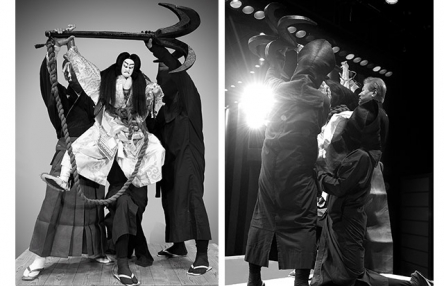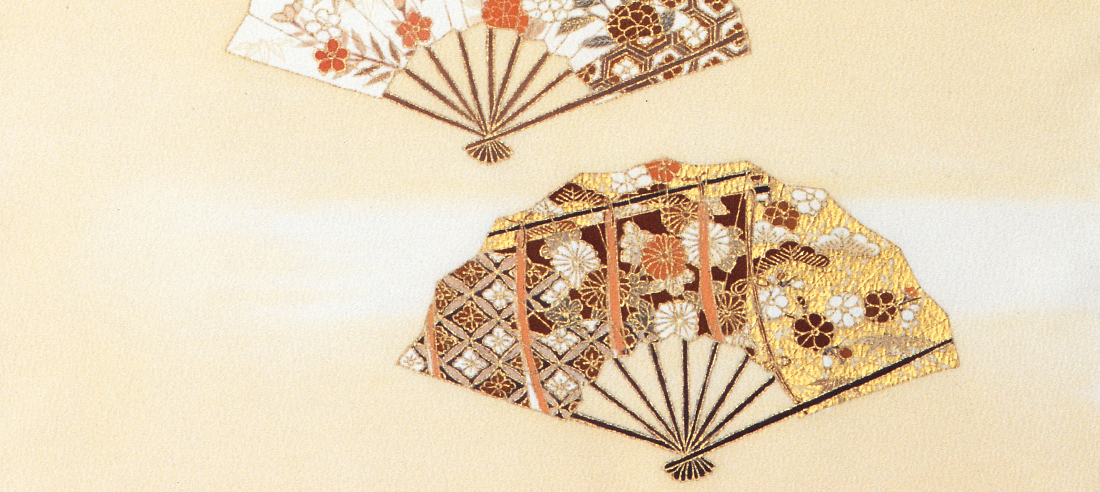
- TRADITION
- 2020.07.04
Kimono Patterns―9
Ougi (Fan) : A shape representing prosperity and good luck
From ancient times, beautiful artistic patterns on kimono have reflected the Japanese people’s delicate senses towards the changing seasons and how social conventions in the country have changed through its history.
This weekly series will take a look at various types of kimono patterns, from those that can be worn year-round to those for special occasions, with a special focus on summer-themed patterns. We will explore the meanings behind the designs as well as insights into styling a kimono attire.
This week, let’s take a look at the splendid collection of three “lucky charm” patterns.
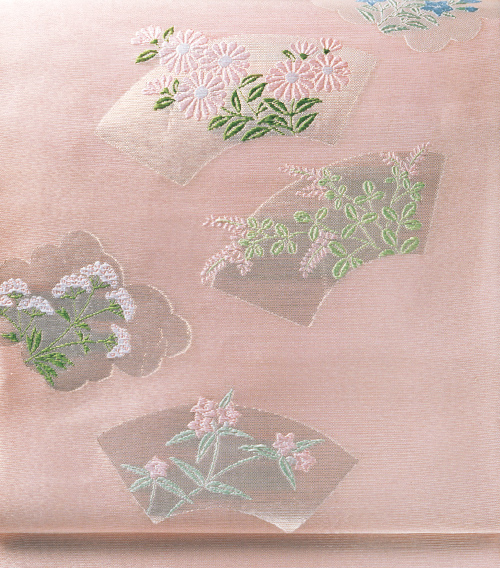
Jigami pattern on an obi sash, with plants and flowers designed inside. Such patterns are expressed on both woven and dyed textiles..
The hot and humid summer climate gave birth to the Japanese foldable fans. Its shape expanding outward is considered a representation of growing prosperity and signs of good luck.
Fanning was also thought to represent the action of inflaming and admonishing someone, and also considered a tool to awaken the gods or spirits, sometimes thought to dwell in physical items. As such, fans came to be used to bring in good luck or to keep evil spirits away, eventually becoming an essential tool for art forms like kagura (sacred Shinto music and dance), Nohgaku (Noh play) and dengaku (ritual music and dance originally performed at agricultural festivals). The unique fanning manners in these art forms have been passed on and are still alive today.
Also an everyday item, fans have been used as patterns from around the Muromachi (1336-1573) and Momoyama (1573-1603) periods. They are depicted in many forms, such as fully-opened, half-opened and closed.

Senmen (“Surface of the fan”)
Senmen patterns can have various illustrations designed on the fan shapes themselves, adding an extra creative fun for the artists. Numerous motifs are designed on the fans, such as various utensils, animals, geometric patterns and lucky charms as well as seasonal plants and flowers, enhancing the pattern itself.
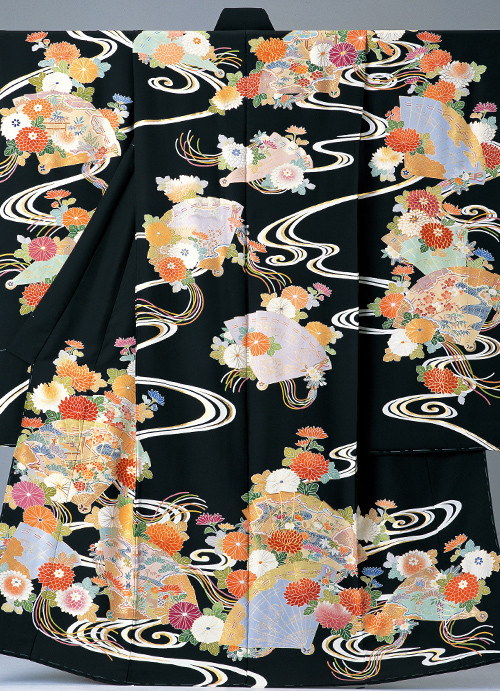
Ougi-nagashi (“Floating fans”)
Depicting fans floating on a flow of water, the fans are pictured in various forms like half-opened and closed. The kimono in this photo has plants and flowers designed alongside the fans, making it a luxurious piece. This pattern originated from an ancient story of a person accidentally dropping a fan into the river; the sight of the fan floating away was so beautiful that people kept dropping more and more fans into the river, giving birth to this pattern. Another version of the story tells of people writing poems on the fans and making them float away on the water for merriment.
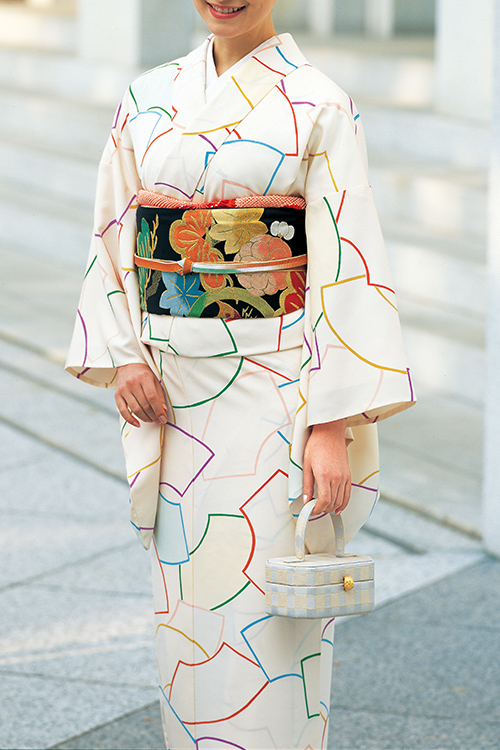
Jigami (“Fan paper”)
Jigami is the paper used to make fans. Fans have rib structures, but the jigami patterns show the beautiful shape of the fan paper without the ribs pictured. The pattern has long been used for Noh costumes and kosode (type of narrow-sleeved kimono worn typically until the Edo period).
Jigami patterns usually have plants and flowers or utensils drawn inside the fan shape. The kimono in the photo above shows a much simpler version, featuring the outlines of the unique form of jigami. Jigami is considered as one of the auspicious patterns.
【Recommended season for wearing this kimono pattern】
All year round

Kaku to kisetsu ga hitome de wakaru―Kimono no mon-yo
(Kimono Patterns―A guide to their rank and seasons )
Supervised by Kenzo Fujii
(Sekai Bunka Publishing, in Japanese)
Featuring over 300 kimono patterns including the ones introduced in this story, the book helps readers learn about the history and meanings of kimono patterns through a rich variety of photos. Kimono and obi can be categorized into kaku (rank) depending on its material and patterns, and different occasions call for combinations of kimono and obi of the appropriate ranks. A practical and entertaining guide for all kimono lovers, the book gives useful tips on common confusions related to the ranks and seasonal categorizations of patterns, as well as numerous kimono styling examples.
Available in Japan through Amazon and other online bookstores here. The book can also be ordered at bookstore counters in Japan with no shipping charges (the service may be unavailable at some stores).



